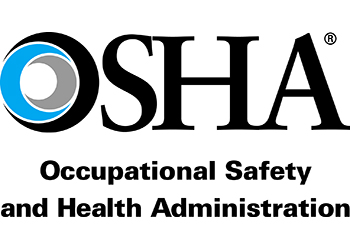OSHA Training Courses Empower Safer, more Sustainable Work Environments
Businesses are realizing that a safe workplace isn’t only good for employees, it’s essential for the environment too. When workers understand how to operate safely and responsibly, it helps prevent accidents, reduce waste, and protect surrounding ecosystems.
Creating workplaces that are both safe and sustainable begins with education. A strong safety culture depends on knowledge, and knowledge starts with the right kind of training. That’s where OSHA (Occupational Safety and Health Administration) programs come in. These courses ensure workers know how to identify risks, handle equipment properly, and respond to emergencies, while also supporting cleaner and greener work practices.
Building safer and more sustainable workplaces
Every sustainable business starts with people who are well-trained and prepared to manage risk. Employees who understand both workplace safety and environmental responsibility are better equipped to prevent hazardous incidents that can harm both workers and nature. OSHA’s training guidelines form the foundation of a strong safety culture, encouraging safer behaviors and smarter decision-making across industries.
Safety training is not just about compliance, it’s about building awareness that protects lives and the environment. When workers follow OSHA-approved standards, spills, leaks, and energy waste decrease, helping companies meet both environmental and operational goals.
How osha training courses make a difference
Training makes the biggest difference when it’s practical and relevant. That’s why FMTC offers a wide range of osha training courses designed for real-world conditions. These programs prepare workers for the challenges of high-risk industries while ensuring compliance with OSHA’s strict safety requirements.
FMTC’s courses cover everything from hazardous materials handling to personal protective equipment and confined space awareness. Each course is developed to meet OSHA standards and help companies maintain safer, more sustainable operations. Workers learn how to identify potential hazards before they become serious, understand emergency protocols, and adopt environmentally conscious habits in their daily routines.
Why training matters in high-risk industries
Certain sectors face more complex safety challenges than others. In construction, heavy equipment and elevated workspaces bring higher risks. In oil and gas operations, environmental exposure and confined space hazards are major concerns. Manufacturing sites often handle chemicals and machinery that can cause accidents or pollution when mishandled.
By completing OSHA-approved training, employees in these industries gain the confidence and expertise needed to prevent accidents, reduce waste, and operate safely. FMTC’s programs give workers the tools to minimize environmental risks, like spills or emissions, by following proper procedures. This protects not only their health but also the planet.
Real benefits for workers and employers
Companies that invest in professional safety training see lasting benefits. Accident rates drop, productivity improves, and employee morale strengthens. Well-trained workers also understand the environmental consequences of unsafe practices, which encourages responsible use of materials and energy.
Safety training doesn’t just meet regulations, it creates workplaces where sustainability is second nature. By integrating OSHA principles into daily operations, organizations can improve efficiency while reducing their carbon footprint. The result is a cleaner, safer, and more reliable workplace for everyone involved.
FMTC’s commitment to safer environments
FMTC is recognized as a global leader in safety education. Their OSHA training programs are built on years of experience and are available in key locations around the world. Each training center provides hands-on learning designed to meet the highest industry standards.
Participants gain more than just certification, they develop the mindset and practical skills needed to work safely in any environment. FMTC’s commitment goes beyond compliance; it’s about creating professionals who understand how their actions impact the world around them. By linking safety and sustainability, FMTC helps shape industries that value human life and environmental protection equally.
Making the connection between safety and sustainability
Modern businesses can’t separate safety from sustainability. A safe workplace reduces environmental harm, while sustainable practices enhance long-term safety outcomes. OSHA training bridges that gap by equipping workers with the knowledge to handle materials, machinery, and emergencies responsibly.
When organizations invest in training, they invest in people, and in the planet. FMTC’s OSHA programs are helping industries everywhere move toward a future where workplace safety and environmental care go hand in hand.
Conclusion
A safer workplace is a greener workplace. Companies that integrate OSHA principles into their operations not only protect their teams but also make a positive impact on the environment. By choosing FMTC’s OSHA training options, businesses can meet safety regulations, strengthen their sustainability goals, and create a culture of responsibility that benefits everyone.


